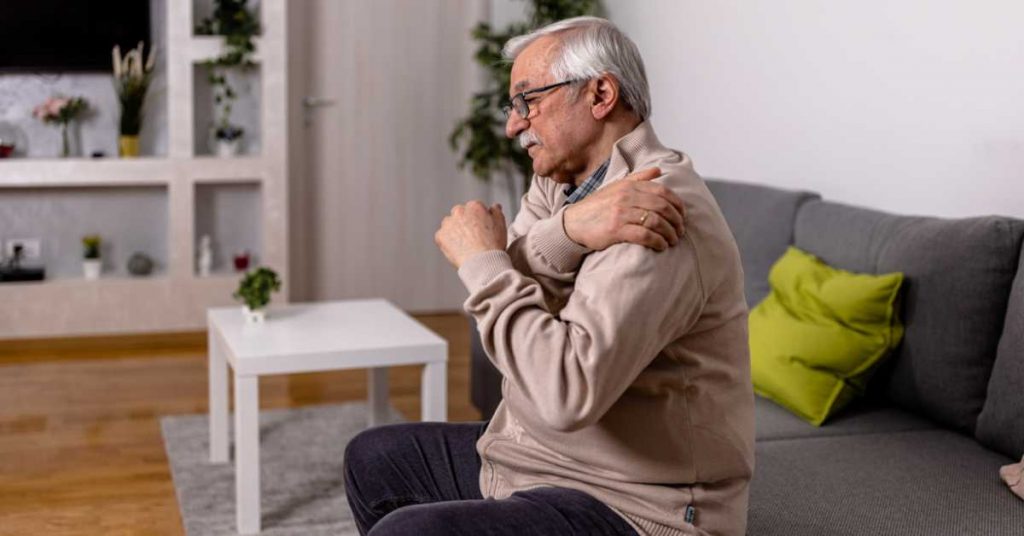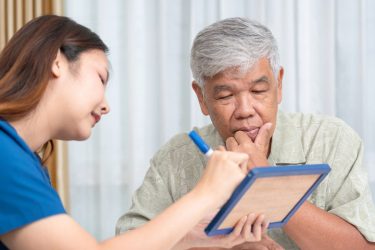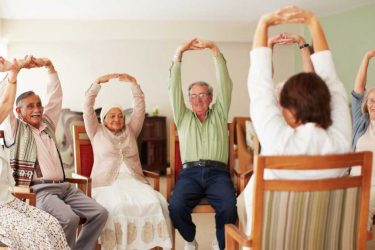Chronic pain is defined as pain that persists for three months or longer and can either be constant or intermittent. It often results from a variety of causes, including musculoskeletal disorders like osteoarthritis, neuropathic conditions such as diabetic neuropathy, and other chronic illnesses like heart disease or cancer. The prevalence of chronic pain in seniors is high, with studies indicating that over 50% of older adults suffer from persistent pain, often in multiple locations.
Chronic pain in seniors is more than just a physical issue; it affects their emotional and mental well-being, contributing to sleep disturbances, depression, anxiety, and a decline in daily functioning. However, with the right strategies, chronic pain can be managed effectively, allowing seniors to lead a fulfilling and active life.
1. Comprehensive Pain Assessment
The first step in managing chronic pain in seniors is regular assessment. Pain is a subjective experience, and its intensity and impact can vary greatly from person to person. Caregivers and healthcare providers should utilize standardized pain assessment tools, such as the Numeric Rating Scale (NRS) or the Faces Pain Scale, to gauge pain levels accurately. Regular monitoring helps tailor interventions and ensures that pain management strategies are adjusted as needed.
Key Tips:
- Consistent Monitoring: Regularly check in with the senior to assess pain levels and observe any changes in behavior that might indicate discomfort.
- Personalized Approach: Understand that each senior’s pain experience is unique, requiring a tailored pain management plan that considers their medical history, type of pain, and personal preferences.
2. Medication Management
Medications play a crucial role in managing chronic pain, but they must be used carefully, especially in older adults who may be more sensitive to side effects. Common medications include acetaminophen, which is generally safe for mild pain, and NSAIDs, which should be used cautiously due to the risk of gastrointestinal and renal complications. For more severe pain, opioids might be prescribed, but these come with risks of sedation, respiratory depression, and addiction.
Key Tips:
- Consult Healthcare Professionals: Work closely with doctors and pharmacists to develop a comprehensive medication plan that minimizes risks and maximizes relief.
- Monitor for Side Effects: Be vigilant about potential side effects, especially with opioids and NSAIDs, and adjust dosages as needed.
- Educate Seniors: Ensure that seniors and their caregivers understand how to take medications properly and recognize signs of adverse reactions.
3. Non-Pharmacological Pain Management
In addition to medication, non-pharmacological approaches can significantly enhance pain management in seniors. These methods are especially beneficial for those who wish to avoid long-term medication use or for whom medications alone are insufficient.
Exercise and Physical Therapy: Regular physical activity, even light exercises like walking, yoga, or water aerobics, can strengthen muscles, improve joint flexibility, and reduce pain. Physical therapy tailored to the individual’s needs can also help alleviate pain and improve mobility.
Heat and Cold Therapy: Applying heat can increase circulation and promote healing, while cold therapy helps reduce inflammation and numb pain. Both methods are simple yet effective ways to manage chronic pain at home.
Massage and Relaxation Techniques: Therapeutic massage can relieve muscle tension and pain, while relaxation techniques like guided imagery, deep breathing, and meditation can help manage the emotional aspects of chronic pain.
Key Tips:
- Incorporate Regular Exercise: Encourage seniors to engage in low-impact exercises regularly to maintain strength and flexibility.
- Utilize Heat and Cold: Apply heat or cold packs as needed to manage pain flare-ups.
- Explore Alternative Therapies: Consider options like acupuncture, biofeedback, or chiropractic care as part of a holistic pain management strategy.
4. Dietary Modifications
Diet plays a crucial role in managing inflammation, a common contributor to chronic pain. Seniors should focus on consuming anti-inflammatory foods such as leafy greens, fatty fish, nuts, and fruits, while avoiding inflammatory foods like processed meats, refined carbohydrates, and fried foods.
Key Tips:
- Adopt an Anti-Inflammatory Diet: Incorporate more fruits, vegetables, and omega-3-rich foods into daily meals.
- Avoid Processed Foods: Reduce or eliminate foods high in refined sugars, trans fats, and preservatives to help lower inflammation levels.
5. Stress Management
Stress is closely linked to the experience of chronic pain. High stress levels can exacerbate pain, making it harder to manage. Techniques such as mindfulness meditation, yoga, and talk therapy can help seniors manage stress effectively, thereby reducing the intensity of their pain.
Key Tips:
- Practice Mindfulness: Encourage daily mindfulness exercises or meditation to help seniors manage stress and focus on the present moment.
- Seek Support: Encourage social interactions and support groups to reduce feelings of isolation and improve emotional well-being.
6. Environmental Modifications
Creating a comfortable environment can significantly impact pain management. Ensure that the senior’s living space is optimized for comfort and accessibility, with supportive bedding, ergonomic furniture, and a soothing atmosphere.
Key Tips:
- Enhance Comfort: Use supportive pillows and cushions to alleviate pressure points, and maintain a comfortable room temperature.
- Improve Accessibility: Arrange furniture and other items in a way that promotes good posture and minimizes strain during daily activities.
7. Emotional and Mental Well-being
Effective pain management goes beyond physical care; it also involves addressing the emotional and psychological aspects of chronic pain. Providing emotional support, encouraging social engagement, and promoting cognitive activities can all contribute to a senior’s overall well-being.
Key Tips:
- Encourage Cognitive Activities: Engage seniors in puzzles, reading, or other mentally stimulating activities to distract from pain and maintain cognitive sharpness.
- Provide Emotional Support: Foster a supportive environment where seniors feel comfortable discussing their pain and emotional struggles.
Managing chronic pain in seniors requires a multifaceted approach that addresses both physical and emotional needs. By combining medication with non-pharmacological techniques, dietary adjustments, stress management, and environmental modifications, caregivers can help seniors lead more comfortable and fulfilling lives. At KindredCare, we are committed to providing the support and resources needed to navigate the challenges of chronic pain, empowering seniors to live their best lives.



